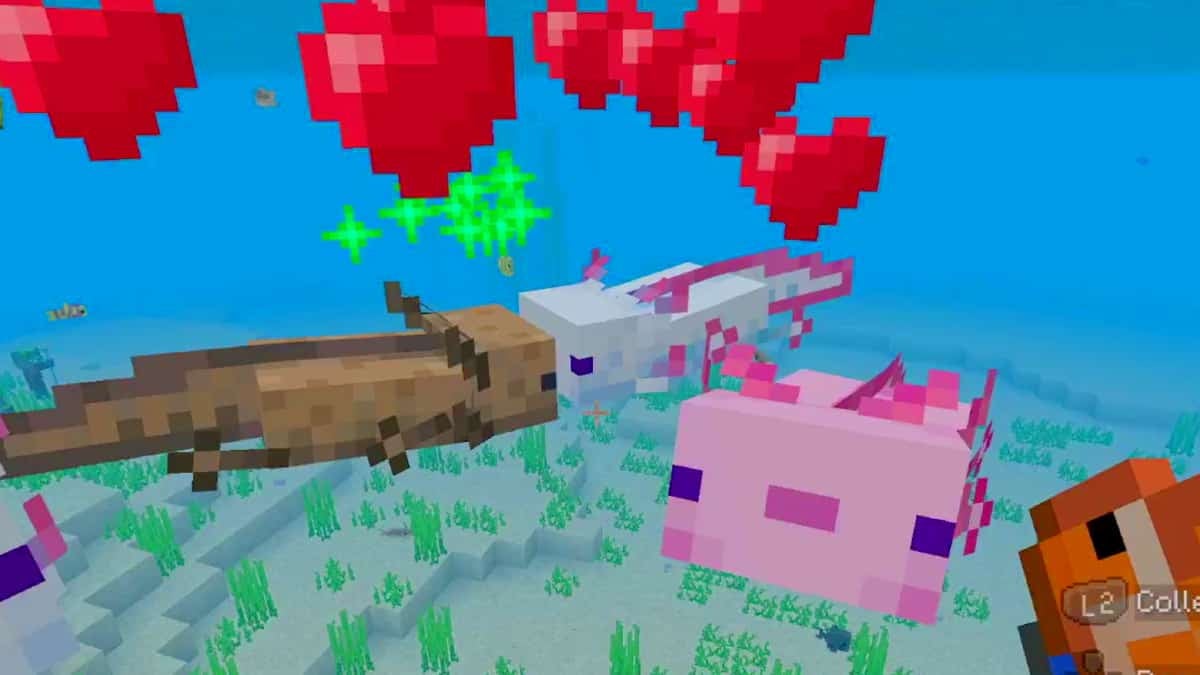![]() Key Takeaway
Key Takeaway
You can breed Axolotls by feeding an adult pair of them Buckets of Tropical Fish. To make Buckets of Tropical Fish, you’ll need to catch any kind of Tropical Fish in Water Buckets. Such fish can be found in warm ocean biomes and in the underground biome known as Lush Caves.
If you want to breed these adorable amphibians, you’ll need their favorite food! Axolotls will only enter love mode when fed Buckets of Tropical Fish. Thankfully, you can sometimes find Tropical Fish where you find wild Axolotls.
Table Of Contents
How to Make Buckets of Tropical Fish
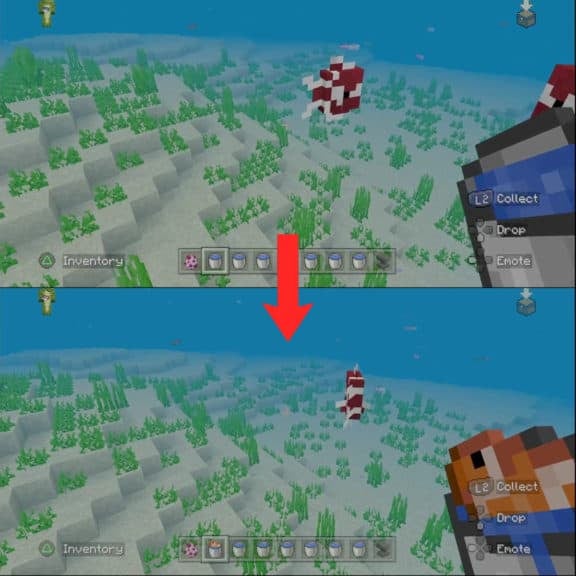
You need to scoop up one of these Tropical Fish in a Water Bucket to create a Bucket of Tropical Fish. There are many different kinds of Tropical Fish in Minecraft. Basically, any colorful fish that isn’t a Cod, Salmon, or Pufferfish is considered a “Tropical Fish.” Keep in mind that using an empty Bucket will not let you catch aquatic mobs in it.
How to Make a Water Bucket

To make a Water Bucket, you’ll first need to make a regular Bucket with 3 Iron Ingots. On a Crafting Table, place the first Iron Ingot in the bottom-center slot. Next, place another Iron Ingot in the middle-left slot. Finally, place the last Iron Ingot into the middle-right slow. This recipe will give you 1 empty Bucket.
In order to turn your Bucket into a Water Bucket, you’ll have to use the empty Bucket on any source of water—including Cauldrons full of water.
Where to Find Tropical Fish
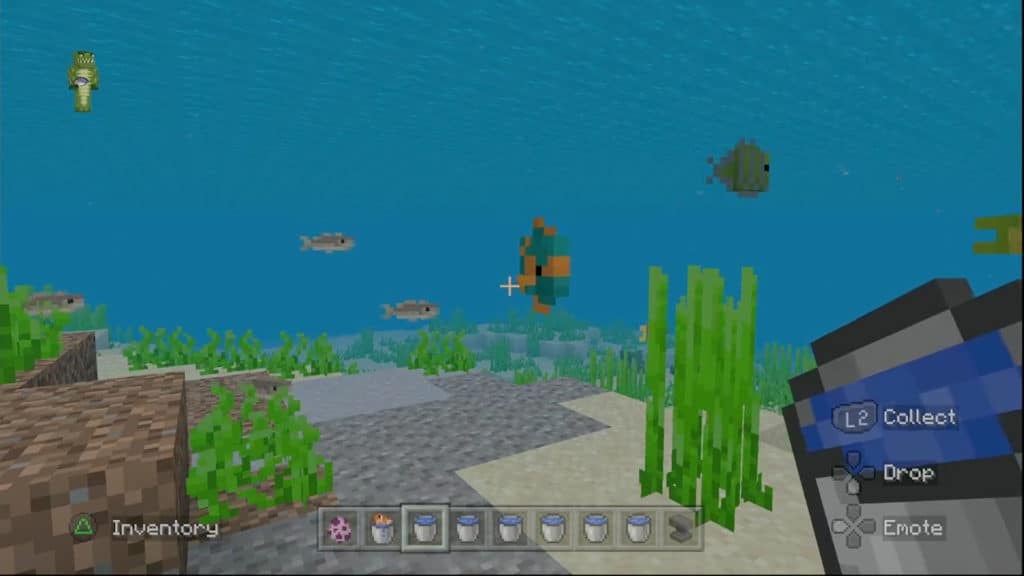
Tropical Fish are found in Warm Ocean biomes, Lukewarm Ocean biomes, Deep Lukewater Ocean biomes, and Lush Caves. Furthermore, most seem to hang out near the surface.
Where to Find All Warm Ocean Biomes
Warm Ocean biomes spawn in hot areas, like near Badlands and Deserts. As for Lukewarm Ocean biomes, they appear in warm regions, such as near Savanna and Jungle biomes. Deep Lukewater Ocean biomes are always found below Lukewarm Ocean biomes.
Where to Find Lush Caves
The best way to find a Lush Cave is to keep an eye out for azalea trees. This species of tree looks much like an oak tree, but with purple flowers on its Leaf blocks. Azalea trees only grow over Lush Caves. As such, if you find their vibrant petals, be sure to (carefully) dig down!
It’s also worth mentioning that you can also find wild Axolotls in Lush Caves. Be sure to bring lots of Water Buckets with you so that you can collect a bunch of Tropical Fish and Axolotls at the same time.
Tips for Breeding Axolotls
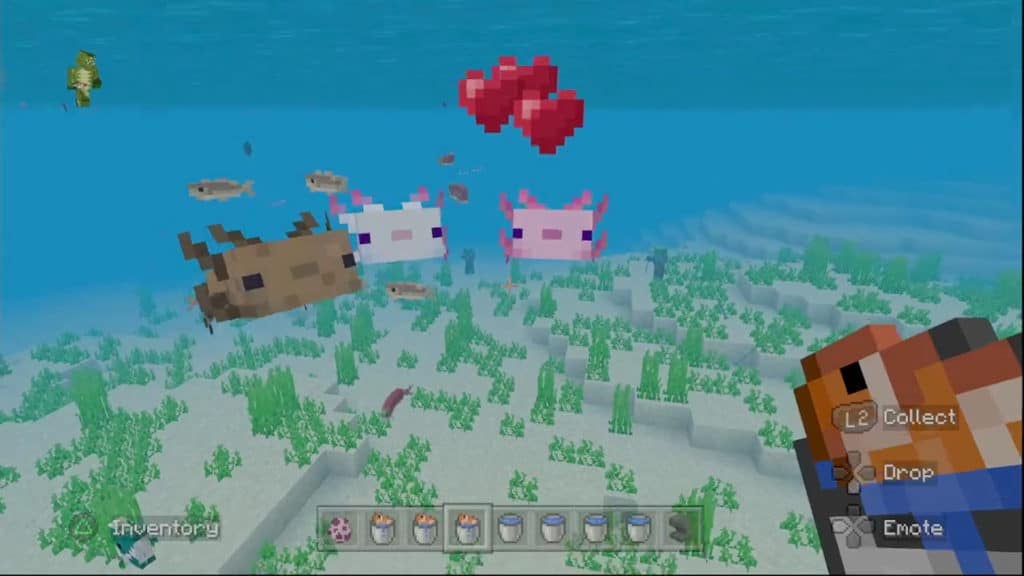
Most of the same general breeding techniques for Axolotls are similar to those of many other animal mobs. You can only breed adult Axolotls. Furthermore, there is a 5-minute cooldown after breeding. Following these 5 minutes, you can breed your Axolotls again.
To do so with the best odds of success, you should make sure both adult Axolotls that you want to breed and close together. If they are too far apart, they won’t notice each other and won’t interact during their respective love modes.
An easy way of bringing Axolotls together is to hold a Bucket of Tropical Fish in your hand. This will get all nearby Axolotls to follow you.
Breeding Axolotls for Their Colors
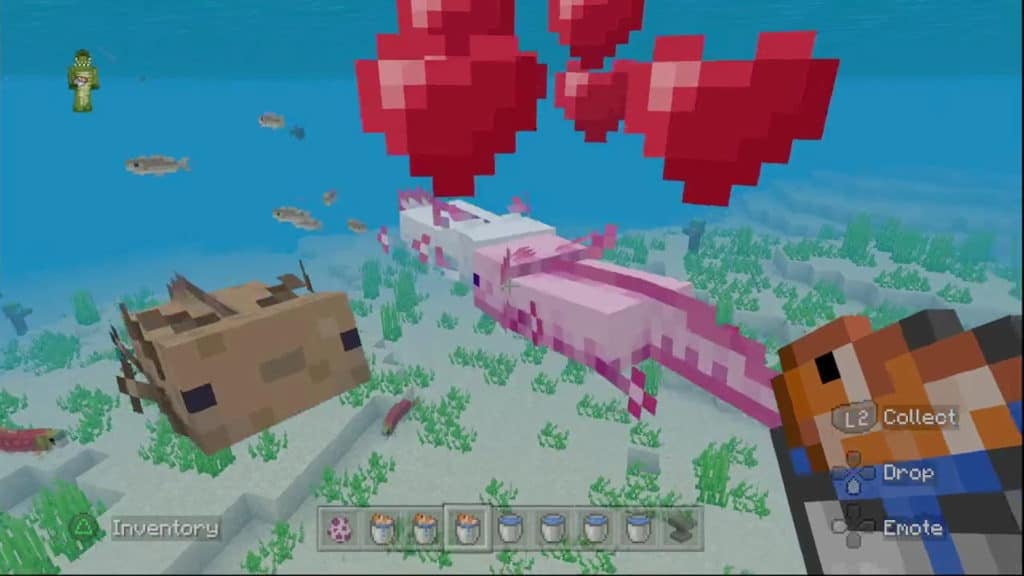
Axolotls can spawn in 5 different colors:
- Pink (“Leucistic” or “Lucy”)
- Brown (“Wild”)
- Yellow (“Gold”)
- Cyan
- Blue
For the most part, a baby Axolotl will have just under a 50% chance to be the color of either parent. For example, if you breed a pink Axolotl with a yellow one, you’ll have a 49.9585% chance of getting a pink baby and an equal chance of getting a yellow baby.
Added up, this means that there is a 99.917% chance that the baby looks like either of its parents. However, there is a 0.083% chance that the color of the baby will mutate and they’ll be born blue.
On top of that, this stacks with the chances of blue babies being born from a breeding pair containing 1 blue adult Axolotls. Specifically, this means that when breeding a blue Axolotl with one of a different color, the chance of the babies being born blue is 50.0415% (49.9585% + 0.083%).
Care Tips for Axolotls
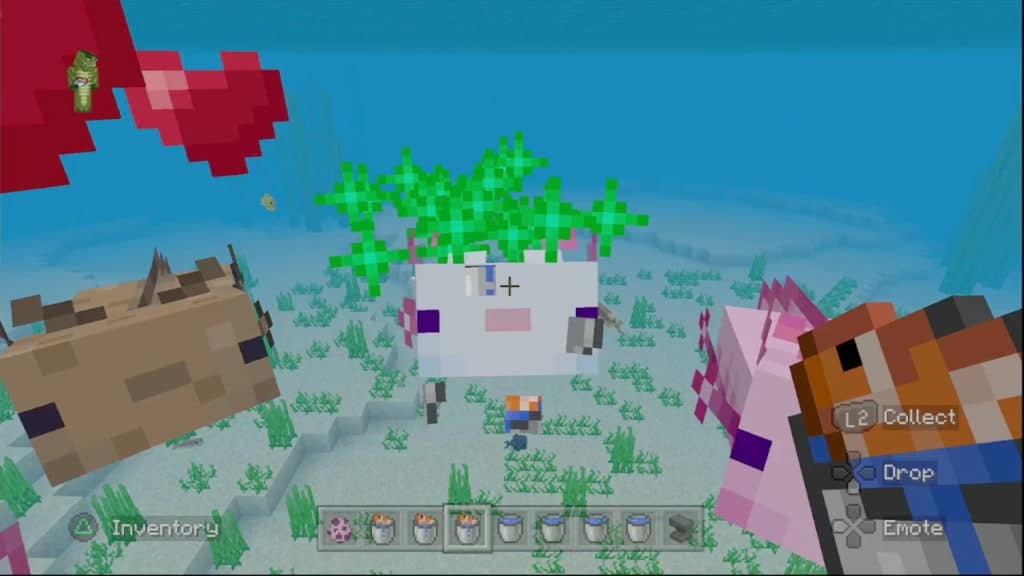
Axolotls need water to live. However, they sometimes like to walk around on land for a bit. On these occasions, they will walk up to 9 blocks away from the water for a little stroll.
Once in a while, Axolotls will get lost and wander off in search of water elsewhere. If left on land for 5 minutes, they will die (unless it is raining). As such, to keep your Axolotls safe and happy, be sure to build walls around their aquatic enclosure. Furthermore, you can build them a small island in their enclosure for somewhere to stretch their little legs.
Axolotls in Combat
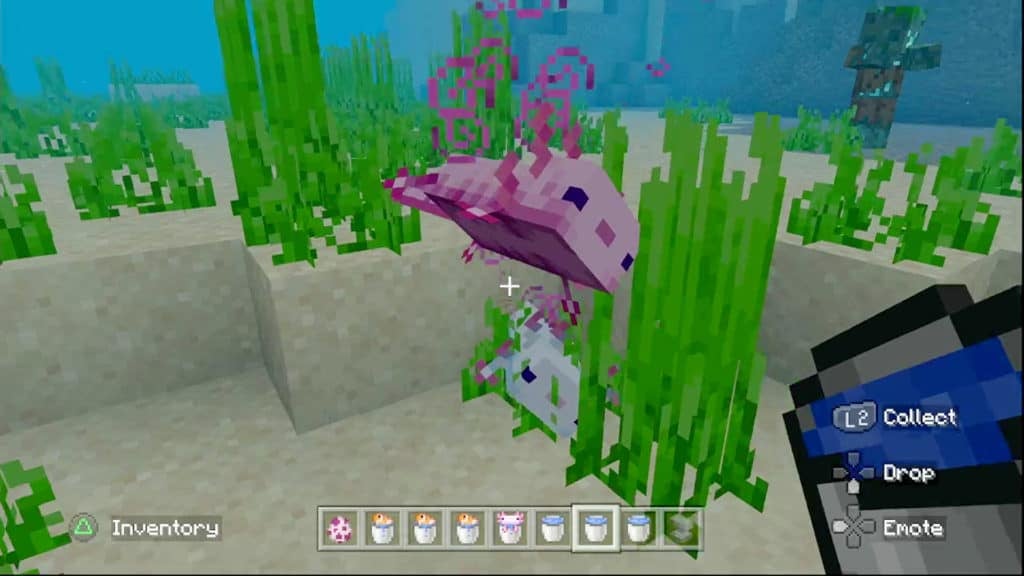
An Axolotl will attack any kind of aquatic mob except Turtles, Dolphins, and Squid. As such, keep hostile mobs like Drowned away from your Axolotls to keep them far from harm.
With that said, these amphibians are pretty feisty. Their attacks don’t deal much damage at only 1 Heart per bite, but they have great healing capabilities. If an Axolotl takes damage while underwater, they’ll play dead for a span of 10 seconds. During this time, they’ll drop down to the seafloor and other mobs will ignore them.
Furthermore, also during this span of 10 seconds, the clever Axolotl will gain the Regeneration 1 effect. At the end of their trick, this will result in Axolotls healing themselves for 4 Hearts. Since Axolotls have 7 Hearts at maximum health, this is a bit more than 50% of their HP.
Transporting Your Axolotl
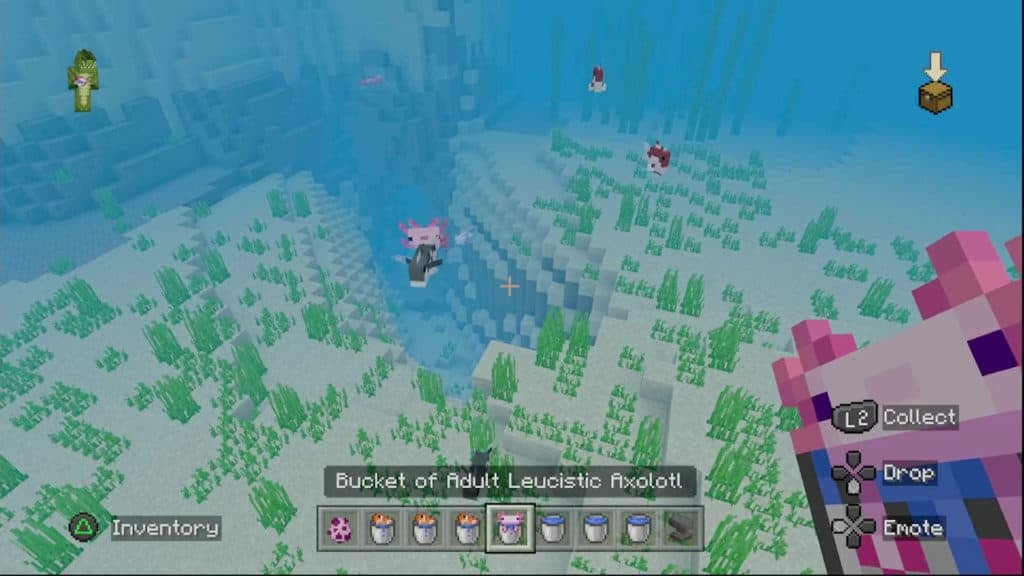
If you need to move your Axolotl, you can do so by picking them up with a Water Bucket. Axolotls cannot travel via flowing water, although, they do seem to be affected by Bubble Streams—like in a water elevator.
Renaming Your Axolotl
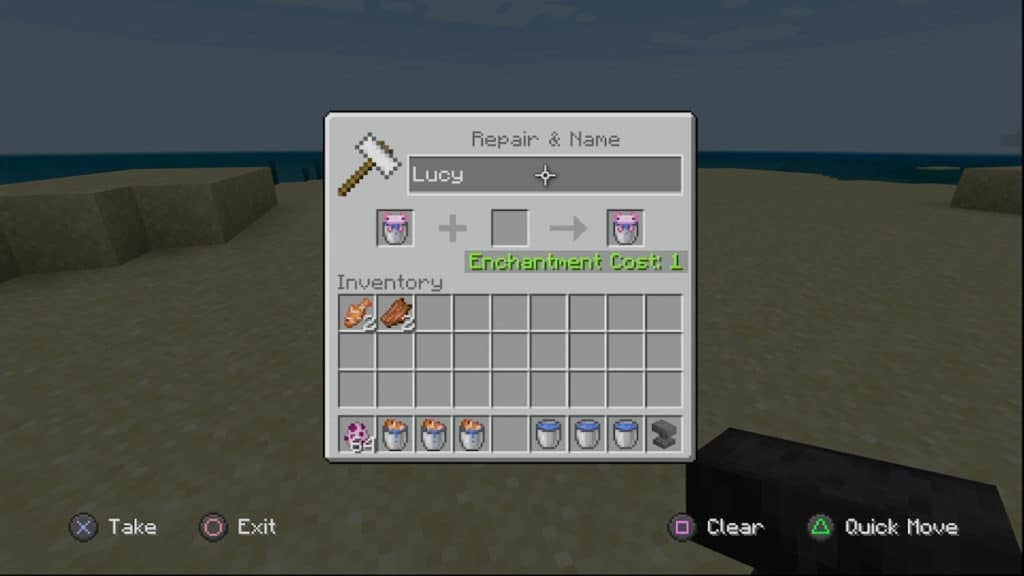
To give your amphibious friend a name, you can scoop them up in a Water Bucket—which will safely contain them in an item called a Bucket of Axolotl. Place the Bucket of Axolotl on an Anvil to give your Axolotl a name. You don’t even need a Name Tag!


